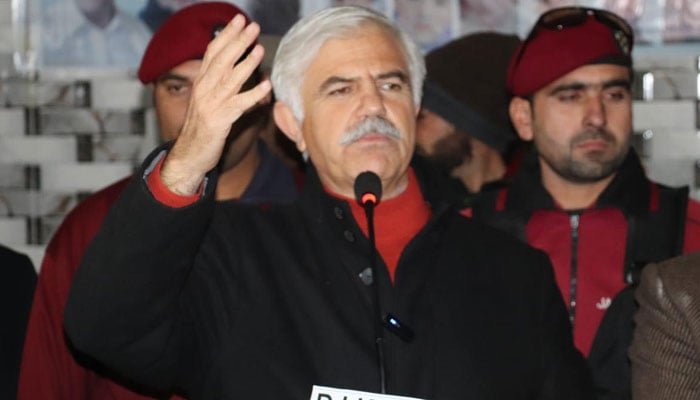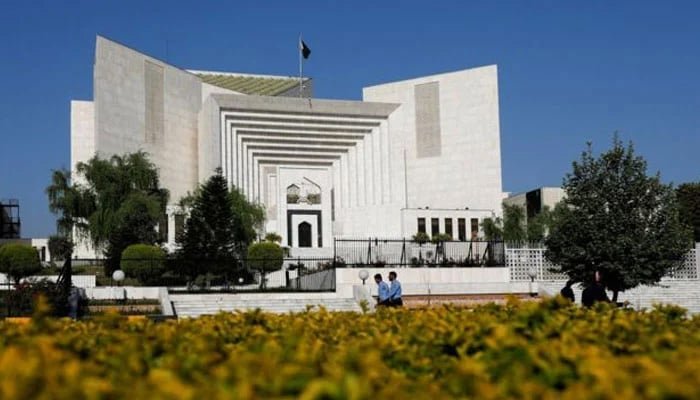The political tension in Pakistan escalated on October 5th as Pakistan Tehreek-e-Insaf (PTI) called for a protest at Minar-e-Pakistan Ground in Lahore. The Lahore police, anticipating large crowds and potential unrest, took preemptive measures by blocking major exit points of the city. Large containers were placed across various locations, including key highways and interchanges, as part of the security strategy.
Blockades Across Lahore
To control the movement of people and ensure law and order, the police erected barriers at several major locations throughout Lahore. Containers were delivered to critical spots such as the Motorway Babu Sabu Interchange, Thokar Niaz Baig, and the entrances of the Lahore-Sialkot Motorway. These steps were aimed at preventing the influx of protestors and securing the city in anticipation of the planned gathering at Minar-e-Pakistan Ground.
The Babu Sabu Interchange, one of the busiest junctions in the city, was entirely closed off for regular traffic. Citizens attempting to enter the motorway from Thokar Niaz Baig were met with closed roads, causing frustration and confusion. Many were heading to Islamabad and other cities and found themselves stranded or forced to take alternate, often longer routes. The closure of key exit points made commuting especially difficult for those trying to travel out of the city.
Impact on Citizens and Travelers
The roadblocks caused significant disruption to daily life in Lahore. Citizens going about their regular routines were caught off guard by the sudden closures, leading to traffic jams and delays. Those commuting to other cities were particularly affected, with long wait times and no clear alternative routes. Many citizens voiced their frustration at being stuck in traffic for hours, unable to find a way out of the city.
The closure of GT Road, however, was more lenient, with traffic continuing to flow normally. GT Road serves as a major artery connecting Lahore to other parts of Punjab, and its normal operation allowed some relief for those looking to bypass the blocked exits. Despite the strategic placement of containers, certain roads within Lahore remained accessible, and local traffic continued with relatively minimal disruptions.
Containers Near Protest Locations
In addition to blocking city exits, the police also placed containers near key protest locations. Roads leading to Minar-e-Pakistan Ground, the focal point of the PTI protest, as well as the railway station, Lorry Adda, and other key junctions were barricaded. These steps were taken to prevent large crowds from converging at the protest site and to ensure that law enforcement could manage the situation effectively.
The Lahore police’s efforts to maintain control over potential hotspots were part of a broader security plan. Authorities aimed to prevent protestors from taking over major roads or disrupting public order. While the protest call by PTI did bring some sections of the city to a standstill, especially around the containers, most of Lahore’s internal traffic remained unaffected, allowing local businesses and residents to continue their day-to-day activities with minimal disturbance.
Islamabad Clashes and Arrests
Meanwhile, the situation in Islamabad took a more serious turn. Clashes broke out between police and PTI workers at multiple locations, including the well-known D Chowk. Tensions escalated as the protestors and law enforcement clashed, resulting in the arrest of over 30 PTI workers. Among those arrested were prominent figures such as Aleema Khan and Uzma Khan, the sisters of PTI’s founder and former Prime Minister Imran Khan. Their arrests made headlines, as both are influential figures within the party and close associates of Imran Khan.
The confrontations in Islamabad highlight the growing tensions between the PTI and the government, with protests and political mobilization becoming more intense. D Chowk, a symbolic location for political demonstrations in Pakistan, has historically been the site of many protests and clashes, and the events on October 5 were no exception.
Security Measures and Political Landscape
The PTI protest comes amidst a highly charged political climate in Pakistan. The party, led by Imran Khan, has been vocal in its criticism of the current government and its handling of national issues. PTI’s calls for protests have often led to large gatherings of supporters, which, in turn, prompted heavy police presence and heightened security measures.
The decision to block exits and key locations in Lahore reflects the authorities’ concerns over potential unrest. By restricting access to Minar-e-Pakistan Ground and controlling movement in and out of the city, law enforcement aimed to mitigate the impact of the protest and prevent any escalation of violence. However, these steps have also led to criticism, with many citizens expressing their displeasure at the inconvenience caused by the roadblocks.
The protest by PTI and the subsequent roadblocks set up by the Lahore police mark another chapter in Pakistan’s volatile political landscape. As the protest unfolds, the disruptions to daily life, particularly for travelers and commuters, highlight the ongoing tension between the government and opposition. While the containers and roadblocks have managed to limit some of the protest’s impact, the political discourse remains as heated as ever, with no clear end in sight. The arrests in Islamabad and the continued stand-off between police and PTI workers serve as a reminder of the deep divisions currently at play in the country’s political arena.



